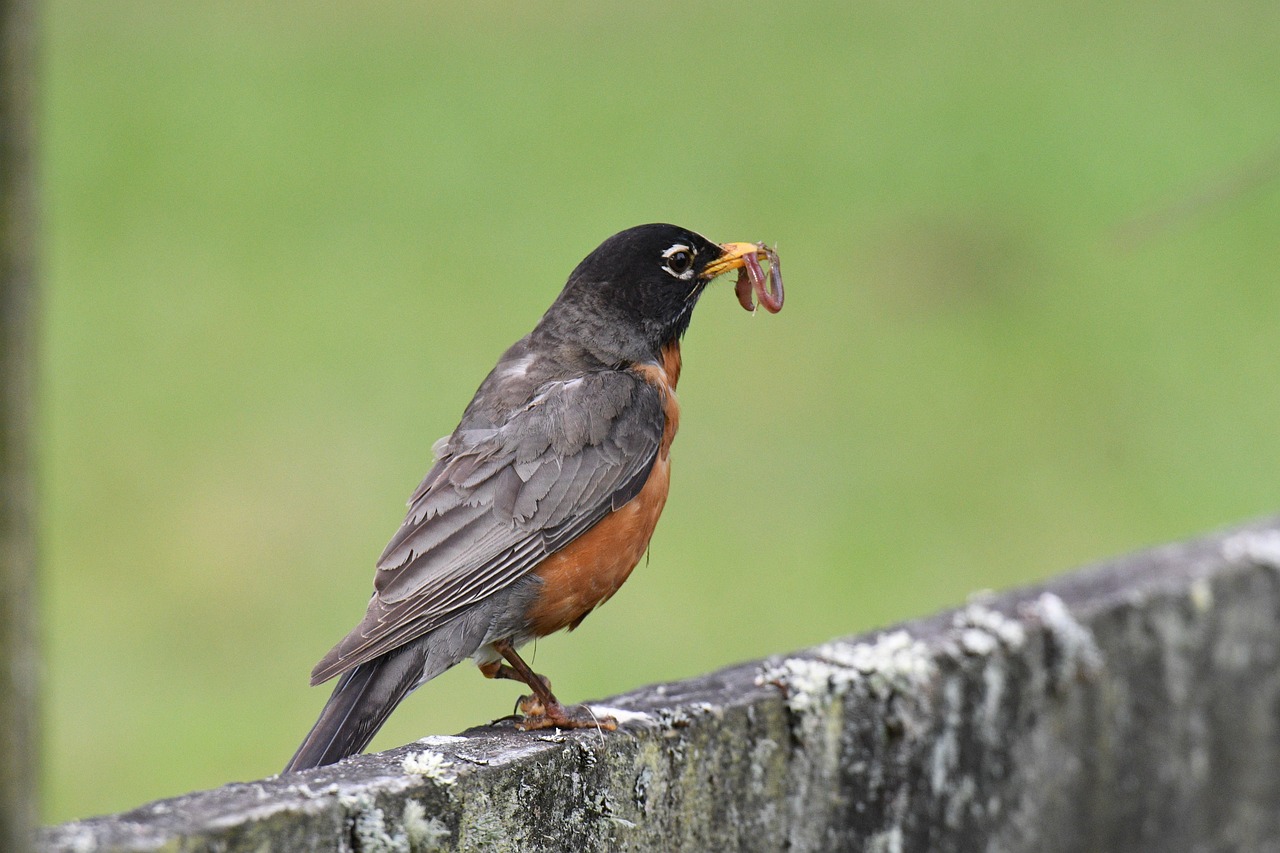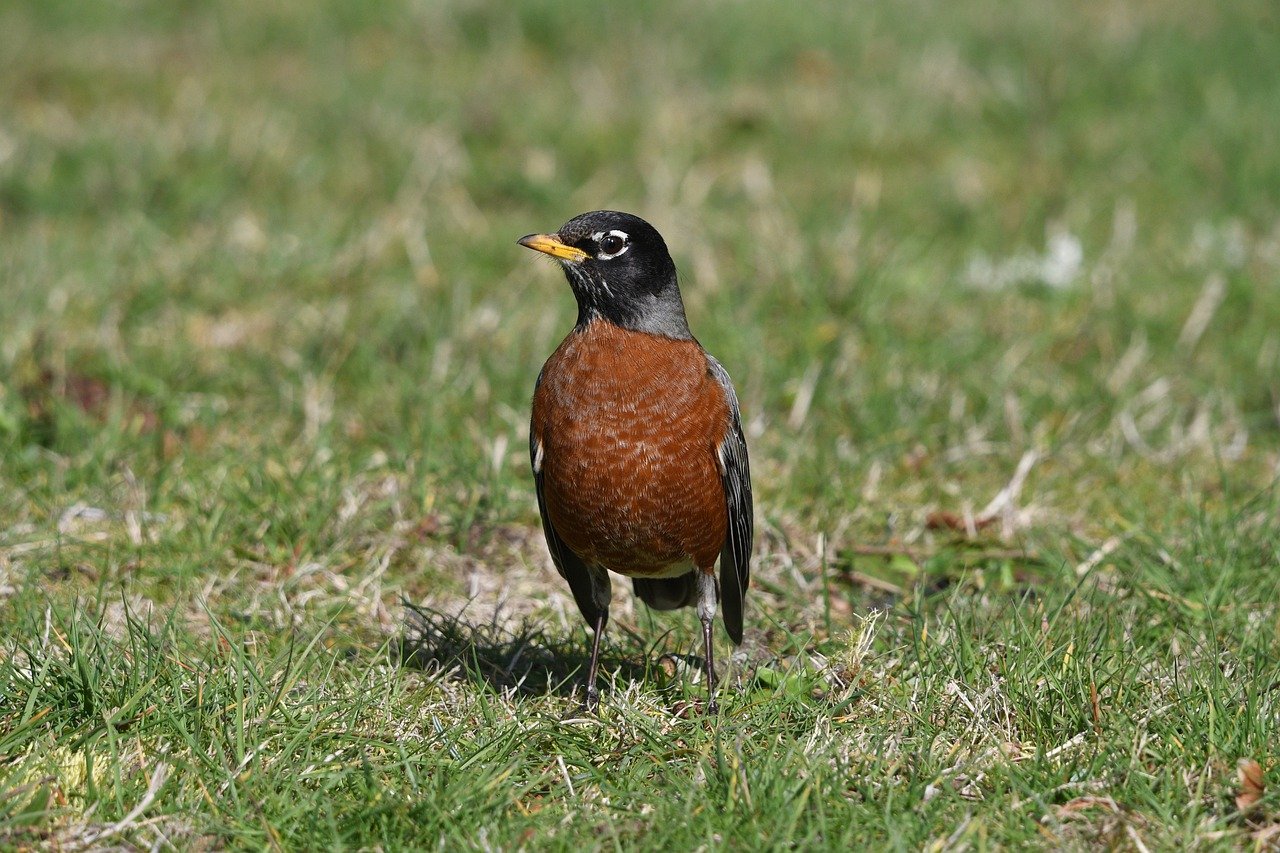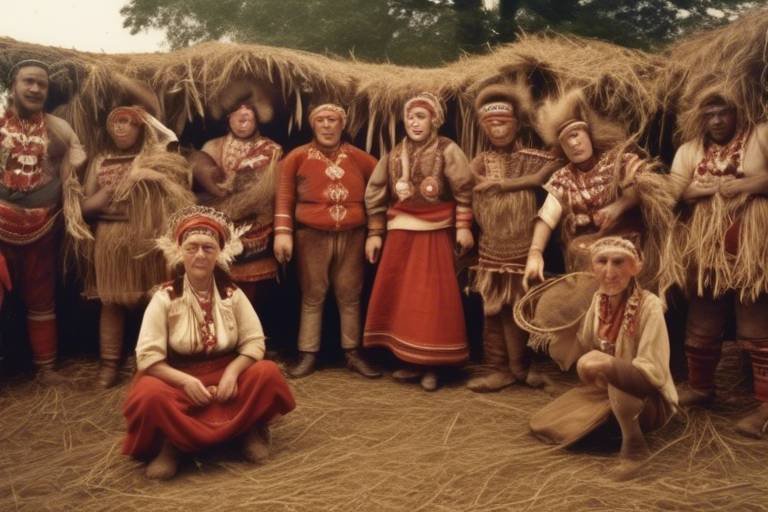The Cultural Heritage of Native American Tribes
Exploring the rich and diverse cultural heritage of Native American tribes reveals a tapestry woven with traditions, languages, art forms, and spiritual beliefs passed down through generations. This intricate web reflects their deep connection to the land and the ancestral wisdom that guides their way of life.
Native American culture is a vibrant mosaic of traditions that have stood the test of time, embodying resilience and profound respect for nature. The traditions are like threads of a sacred blanket, each unique yet essential to the overall pattern of tribal identity.
From the beating drums of powwows to the intricate beadwork adorning regalia, every aspect of Native American culture tells a story. The art forms and crafts of these tribes serve as living expressions of creativity, symbolism, and the deep-rooted storytelling traditions that have been passed down through generations.
Language is the heartbeat of any culture, and for Native American tribes, it is a vessel of ancestral knowledge and identity. Efforts to preserve and revitalize indigenous languages are crucial in maintaining the cultural tapestry that binds these communities together.
Sacred landscapes and sites hold a special place in the hearts of Native American tribes, serving as portals to the spiritual realm and embodying the wisdom of their ancestors. These places of reverence, from ancient burial grounds to towering mountains, are imbued with the essence of tribal heritage.
Healing practices rooted in nature and spiritual beliefs form the foundation of traditional medicine among Native American tribes. Herbal remedies, spiritual ceremonies, and holistic approaches to wellness reflect a deep understanding of the interconnectedness of all living beings.
Unity among tribes is a cornerstone of Native American culture, fostering alliances and collaborations that transcend individual communities. Through shared traditions, councils, and cooperative efforts, tribes work together to preserve their heritage and address common challenges.
The legacy of colonization has left a lasting impact on Native American tribes, but their resilience shines through in their ongoing efforts to reclaim cultural heritage and advocate for sovereignty. Despite historical trauma, these communities stand strong in their quest for self-determination.
Contemporary cultural revitalization movements breathe new life into age-old traditions, ensuring that the flame of Native American culture continues to burn brightly. By reclaiming, celebrating, and sharing their heritage, tribes pave the way for future generations to walk in the footsteps of their ancestors.

Traditional Ceremonies and Rituals
Traditional ceremonies and rituals hold a sacred place in Native American culture, serving as profound expressions of spiritual beliefs and communal identity. These ceremonies are not just events but powerful connections to ancestral traditions and the natural world. One of the most well-known ceremonies is the powwow, where tribes come together to dance, sing, and honor their heritage through vibrant regalia and rhythmic beats. The powwow is a celebration of unity, resilience, and cultural pride, showcasing the rich diversity and traditions of different tribes.
Another essential ritual is the sweat lodge, a purification ceremony that involves entering a heated structure to cleanse the body, mind, and spirit. The sweat lodge represents a symbolic rebirth and renewal, guiding participants through a transformative experience of purification and healing. Similarly, the vision quest is a spiritual journey undertaken to seek guidance, insight, and connection with the spiritual realm. It is a deeply personal and introspective ritual that fosters self-discovery and spiritual growth.
The sun dance is a powerful ceremony that symbolizes rebirth, sacrifice, and renewal. Participants engage in fasting, dancing, and prayer to honor the sun and connect with the spiritual energies of the universe. The sun dance is a testament to the resilience and spiritual strength of Native American communities, embodying the interconnectedness of all living beings and the cycles of nature.

Artistic Expressions and Crafts
Exploring the rich and diverse cultural heritage of Native American tribes, encompassing traditions, languages, art forms, and spiritual beliefs passed down through generations, reflecting their deep connection to the land and ancestral wisdom.
Artistic expressions and crafts hold a special place in the heart of Native American tribes, serving as a vibrant tapestry woven with creativity, symbolism, and storytelling. From intricate pottery to mesmerizing beadwork, each piece carries a piece of the tribe's history and culture, embodying the essence of their identity.
One of the most captivating aspects of Native American art is the attention to detail and the deep-rooted meanings behind each design. Whether it's the geometric patterns in basket weaving or the intricate beadwork adorning traditional regalia, every stroke and stitch tells a story of resilience, spirituality, and connection to the natural world.
Moreover, these artistic expressions are not merely decorative but serve as a form of communication, transmitting tribal knowledge, values, and traditions across generations. The vibrant colors, patterns, and motifs used in Native American crafts are a visual language that speaks of heritage, respect for nature, and a profound connection to the past.
Through their art, Native American tribes preserve their cultural legacy, ensuring that their traditions and beliefs are not forgotten but celebrated and shared with the world. Each piece crafted with care and reverence is a testament to the enduring spirit of these communities, a living embodiment of their resilience and creativity.

Language Preservation Efforts
Exploring the rich and diverse cultural heritage of Native American tribes, encompassing traditions, languages, art forms, and spiritual beliefs passed down through generations, reflecting their deep connection to the land and ancestral wisdom.
In the intricate tapestry of Native American culture, language serves as a vital thread weaving together the essence of identity and heritage. The efforts dedicated to preserving indigenous languages are not merely about words; they are about safeguarding the very soul of each tribe's unique worldview and wisdom.
Imagine a language as a living entity, breathing life into traditions, stories, and values that have withstood the test of time. Through language, the ancestral knowledge and spiritual insights of Native American tribes are transmitted from one generation to the next, forming a bridge between the past, present, and future.
Language preservation initiatives within Native American communities are akin to nurturing a rare and precious flower on the brink of extinction. These endeavors encompass a range of strategies, from establishing language immersion programs and developing educational materials to recording oral histories and collaborating with fluent speakers to pass on their linguistic legacy.
Tables of conjugations, lists of vocabulary, and interactive language learning tools all play a crucial role in revitalizing and teaching tribal languages to younger generations. By embracing their native tongues, Native American communities not only reclaim a piece of their cultural heritage but also empower their youth with a profound connection to their roots.

Sacred Landscapes and Sites
Native American tribes hold a deep reverence for sacred landscapes and sites that are imbued with spiritual significance and ancestral connections. These places, ranging from expansive natural landscapes to specific geographical features, play a crucial role in the cultural heritage of indigenous communities.
One of the most revered types of sacred sites are burial grounds, where ancestors are laid to rest, and the living can connect with their past. These grounds are not merely physical locations but are considered portals to the spiritual realm, where the past, present, and future intersect in a seamless continuum of existence.
Mountains are also considered sacred by many Native American tribes, symbolizing strength, endurance, and the enduring presence of the divine. These towering peaks are often seen as places of spiritual enlightenment, where individuals can seek guidance, wisdom, and clarity through communion with the natural world.
Rivers hold a special place in the hearts of indigenous peoples, representing the flow of life, purification, and renewal. Water is considered a sacred element, essential for sustenance and spiritual cleansing. Many tribes perform rituals and ceremonies along riverbanks to honor the vital role of water in their lives.
Forests are regarded as sacred spaces where the spirits of the land reside, and where humans can commune with nature in its purest form. Trees, plants, and animals within the forest are seen as interconnected beings, each playing a vital role in the intricate web of life that sustains the earth.
These sacred landscapes and sites are not just physical locations; they are living entities that embody the essence of Native American spirituality and traditional wisdom. They serve as reminders of the interconnectedness of all living beings and the importance of honoring and preserving the natural world for future generations.

Traditional Healing Practices
Traditional healing practices among Native American tribes are deeply rooted in the connection between the physical, spiritual, and natural worlds. These practices encompass a holistic approach to wellness that integrates herbal remedies, spiritual ceremonies, and cultural beliefs. The use of medicinal plants, passed down through generations, plays a significant role in treating various ailments and maintaining balance within the body.
Healing ceremonies are often conducted by tribal healers or medicine people who possess specialized knowledge and spiritual abilities. These ceremonies may involve the use of sacred herbs, such as sage, cedar, and sweetgrass, to cleanse and purify the individual's energy field. The rhythmic beating of drums and chanting are also common elements in these ceremonies, creating a harmonious environment for healing to take place.
Furthermore, traditional healing practices emphasize the interconnectedness of all living beings and the importance of restoring harmony not only within the individual but also within the community and the natural world. It is believed that illness is often a manifestation of imbalance, whether physical, emotional, or spiritual, and that healing must address these underlying causes to achieve true wellness.
Through traditional healing practices, Native American tribes not only treat physical ailments but also nurture the spiritual and emotional well-being of individuals. These practices are a testament to the resilience and wisdom of indigenous cultures, offering valuable insights into alternative approaches to health and healing that honor the interconnectedness of all life.

Intertribal Relations and Unity
Intertribal relations and unity among Native American tribes are integral aspects of their cultural tapestry, weaving together diverse traditions, histories, and beliefs into a cohesive whole. Through alliances, councils, and collaborative efforts, tribes forge connections that transcend individual identities, fostering a sense of solidarity and mutual respect.
These intertribal relationships serve as pillars of strength, enabling tribes to address common challenges, share knowledge, and support one another in times of need. By coming together, tribes can amplify their voices, advocate for indigenous rights, and protect shared cultural heritage from external threats.
Within these intertribal networks, a rich tapestry of cultural exchange unfolds, where stories are shared, traditions are honored, and ceremonies are conducted to celebrate the interconnectedness of all tribal nations. Through this unity, tribes reaffirm their collective identity and resilience in the face of historical adversity.

Impact of Colonization and Resilience
Exploring the rich and diverse cultural heritage of Native American tribes, encompassing traditions, languages, art forms, and spiritual beliefs passed down through generations, reflecting their deep connection to the land and ancestral wisdom.
Colonization has left a profound impact on Native American tribes, disrupting centuries-old traditions and cultural practices. The arrival of European settlers led to the forced assimilation of indigenous peoples, loss of land, and suppression of native languages and spiritual beliefs. Despite these challenges, Native American communities have demonstrated remarkable resilience in the face of adversity.
The enduring resilience of Native American tribes is evident in their efforts to reclaim and revitalize cultural heritage that was once suppressed. Through cultural preservation initiatives, tribes are reclaiming traditional practices, languages, and art forms that were on the brink of extinction. This resilience is a testament to the strength and determination of indigenous communities to preserve their identity and ancestral wisdom.
Moreover, Native American tribes have been advocating for tribal sovereignty and self-determination, asserting their rights to govern their own affairs and protect their cultural heritage. By confronting the legacy of colonization and historical trauma, tribes are working towards healing and rebuilding their communities while ensuring the preservation of their cultural legacy for future generations.
Below are some common questions about the cultural heritage of Native American tribes:
- Why is the preservation of indigenous languages important?
- How do traditional healing practices contribute to the wellness of Native American communities?
- What are some examples of contemporary cultural revitalization efforts?
- How do sacred landscapes and sites connect Native American tribes to their ancestral roots?

Contemporary Cultural Revitalization
Exploring the rich and diverse cultural heritage of Native American tribes, encompassing traditions, languages, art forms, and spiritual beliefs passed down through generations, reflecting their deep connection to the land and ancestral wisdom.
Contemporary cultural revitalization movements within Native American communities are crucial for preserving and celebrating traditional practices, art forms, languages, and knowledge. These efforts aim to ensure the continuation of cultural heritage for future generations by reclaiming and sharing the rich traditions of the past.
One of the key aspects of contemporary cultural revitalization is the revival of traditional ceremonies and rituals that have been passed down through generations. Communities come together to participate in powwows, sweat lodges, and other cultural events, fostering a sense of unity and pride in their heritage.
Moreover, artistic expressions play a significant role in revitalizing Native American culture. Through pottery, beadwork, basket weaving, and other crafts, artisans showcase their creativity and storytelling abilities, preserving the symbolism and cultural significance embedded in their visual arts.
Language preservation efforts are also central to contemporary cultural revitalization. Initiatives aimed at teaching and revitalizing tribal languages among younger generations are essential for safeguarding indigenous languages from extinction and maintaining a vital link to ancestral wisdom.
Additionally, contemporary cultural revitalization emphasizes the importance of sacred landscapes and sites to Native American tribes. These areas, such as burial grounds, mountains, rivers, and forests, hold deep spiritual significance and traditional wisdom, serving as vital connections to the past.
Through intertribal relations and collaborative efforts, Native American tribes work together to address common challenges and promote cultural exchange. Alliances and councils are formed to preserve indigenous heritage, foster unity, and ensure the continued resilience of tribal communities in the face of adversity.
Despite the enduring impact of colonization on Native American tribes, their ongoing resilience shines through in their efforts to reclaim cultural heritage. By addressing historical trauma, advocating for tribal sovereignty, and asserting their right to self-determination, tribes are reclaiming their identity and cultural practices.
Contemporary cultural revitalization movements serve as a beacon of hope for the preservation and celebration of Native American heritage. By reclaiming, celebrating, and sharing traditional practices, art forms, languages, and knowledge, these communities ensure the vibrancy and resilience of their cultural legacy for generations to come.
Frequently Asked Questions
- What are some common traditional ceremonies practiced by Native American tribes?
Native American tribes engage in various traditional ceremonies such as powwows, sweat lodges, vision quests, and sun dances. These ceremonies hold deep spiritual significance and play a vital role in preserving tribal identity and cultural practices.
- How do Native American tribes preserve their languages?
Native American communities undertake language preservation efforts to safeguard endangered indigenous languages. Initiatives are implemented to revitalize and teach tribal languages to younger generations, ensuring the continuity of linguistic heritage.
- What are some examples of traditional healing practices among Native American tribes?
Traditional healing practices of Native American tribes include herbal remedies, spiritual healing ceremonies, and holistic approaches to wellness rooted in cultural beliefs. These practices emphasize the connection between the natural world and overall well-being.
- How do Native American tribes collaborate for cultural preservation?
Intertribal relations and unity are fostered among Native American tribes through alliances, councils, and collaborative efforts. These initiatives aim to address common challenges, promote cultural exchange, and preserve indigenous heritage collectively.
- What is the significance of contemporary cultural revitalization movements within Native American communities?
Contemporary cultural revitalization movements within Native American communities focus on reclaiming, celebrating, and sharing traditional practices, art forms, languages, and knowledge. These efforts ensure the preservation of cultural heritage for future generations.



















